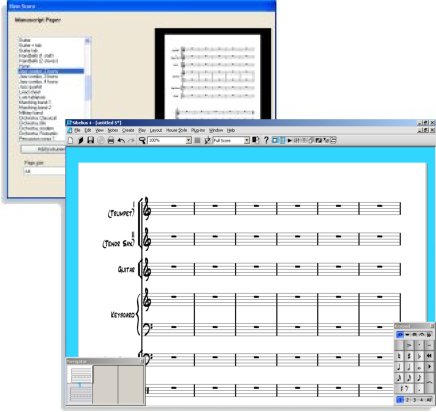

So when defining the region for the ritard you can use any staff in the score. Which is usually at least above (or below) the top staff of the score. So no matter what staff you use as a guide to place the ritard, it will appear where ever you have defined system objects to be.

That means they will appear on the score and all the parts. One thing to remember is that all tempo lines are system text. In the example below we want to ritard on beats 2 through 4 of bar 101. The way to do this is constrain the ritard to a specific region. Next we want to make sure the ritard progresses over exactly 3 beats. – In the boxes for ‘Vertical position relative to staff:’ lets set it to 5 spaces for Score which is 5 spaces above the staff and -5 for Parts which is 5 spaces below the staff

which is the ritard text with a dashed line after it Here is where we can define the default horizontal and vertical position of text, lines and other objects. Go to the Appearance tab and click on the design and position edit box. For the rest of the post I will use ritard for the example but the same technique applies for accelerando and all other type of tempo lines.īefore we tweak the playback of the ritard line, lets get it positioned correctly so it looks right and plays back the way we want it to.įirst let’s look at the horizontal and vertical placement of the ritard line. In this post we’ll use a very similar technique to fine tune the way ritard, accelerando and all other tempo based lines affect playback. In my last blog post in this series Sibelius 7 Playback tips: Tweaking Gliss lines we looked at using the Inspector to tweak gliss lines.


 0 kommentar(er)
0 kommentar(er)
